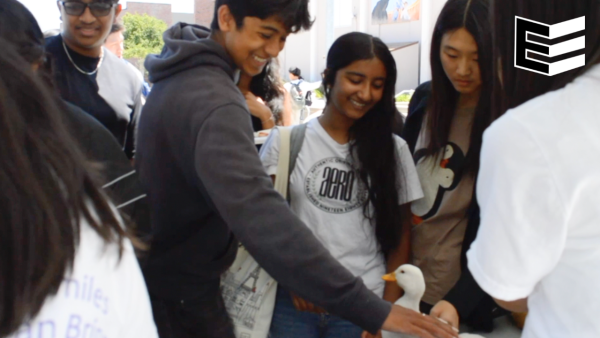How to prevent and react to violence
Students Fight Back webinar teaches verbal and physical self defense strategies
After Shannon McNamara, a college student at Eastern Illinois University, was murdered in her apartment in 2001, McNamara’s friend, Erin Weed, started the organization Girls Fight Back (GFB). GFB representatives taught people at high schools and colleges across the country personal safety, violence prevention and self-protection. It was later renamed Students Fight Back (SFB) to be more gender inclusive.
Presenter Nicole Snell, a survivor of violence herself, led the “Be Empowered, Stay Safe” webinar for FUHSD Monday evening, facilitated by PTSA President Kathy Jacques and Principal Ben Clausnitzer. Snell emphasized her motto: “I am so powerful. I am worth fighting for,” while covering prevention methods of intuition, awareness and being aware of manipulation methods. Snell also talked about bystander intervention, how to support a survivor and verbal and physical defense strategies.
TRUST YOUR INTUITION
Snell quotes violence prevention expert Gavin de Becker from his book “The Gift of Fear”: “intuition is knowing something without knowing why.” To her, intuition is always in response to something and leads us to safety — yet humans are the only beings that ignore their own intuition. She urges everyone to trust their intuition instead of talking themselves out of it and elaborates with a story from before the pandemic, when she was going to drive to the LAX airport at 4 a.m.
“I go out to my car, like I’ve done dozens of times before, and I instantly got this intuitive feeling that something was wrong,” Snell said. “My entire body broke out into chills, I had goosebumps. And I looked around, I couldn’t do anything and I didn’t hear anything. I opened my car door and threw my suitcase in there in 1.5 seconds flat, got in my car and drove away. And to this day, I still don’t know what was it that sparked my intuition, but I trusted it. And I want us to be confident and be comfortable trusting that feeling because it’s designed to help us.”
CHOOSE AWARENESS
To be conscious of one’s surroundings, Snell says to focus on body language in order to communicate and embody confidence. She recommends standing tall with shoulders back and head up, looking around to make eye contact briefly with anyone in the vicinity, even if they seem suspicious.
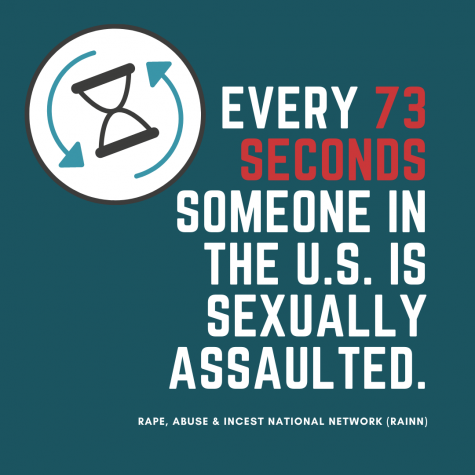
“People who mean us harm are paying attention to us as much as we’re paying attention to everything else that’s in the world,” Snell said. “They’re looking for people that they think are vulnerable, accessible or distracted. Just look at somebody long enough to say ‘I see you’ in your head and just move along. The amount of time it takes to say ‘I see you’ is like a second. And that can give you enough time for your brain to figure out what to do with this person. And gentle eye contact is also another sign of confidence because now this person knows that you see them and that can also be a deterrent.”
Instead of focusing on who we think will commit a crime and paying attention to a specific person, Snell says people need to be aware of the whole picture. This is due to assumptions about potential dangerous people due to media influence, fear and urban legends, including someone’s skin color, ethnicity, socioeconomic class and clothing.
“These are all societal stereotypes,” Snell said. “But a creeper can unfortunately be anybody. Anybody is capable of committing a crime. Anybody, of any gender, of any race, from anywhere in the world.”
Another aspect of their environment Snell says people should be aware of are tools of manipulation others may use, such as charm or typecasting — which is provoking someone to try and spark a conversation or gain attention — and disrespecting a “no.” When encountering these tools, Snell says to ask yourself what they want. If uncomfortable, she advises to avoid apologizing and instead say “I’m not interested in having a conversation with you,” or some variation of “It was nice talking to you, but I have to go.”
“If someone is making you uncomfortable, should you have to sit there and be uncomfortable?” Snell said. “Do your feelings not matter? Should we be so worried about the other person’s feelings that we put ours aside? The answer is no because our feelings do matter — what we want and what we need does matter. And sometimes what we do is we put other people’s needs and the feeling that we’re going to offend someone or hurt their feelings, we put that above what we need to feel safe, what we need to feel comfortable. It’s OK to set a boundary. Your safety comes before someone else’s feelings.”
BYSTANDER INTERVENTION
Snell says that in the case of McNamara, people in the apartment building could hear her struggles, but did not step in. She notes that with serious situations, others think that it is not their business to intervene. She urges everyone to step in if it is safe or contact authorities and help. People should use non complementary behavior — meeting anger with calmness and asking questions to interrupt their hostility, according to Snell. The goal is to de-escalate the situation and distract the attacker.
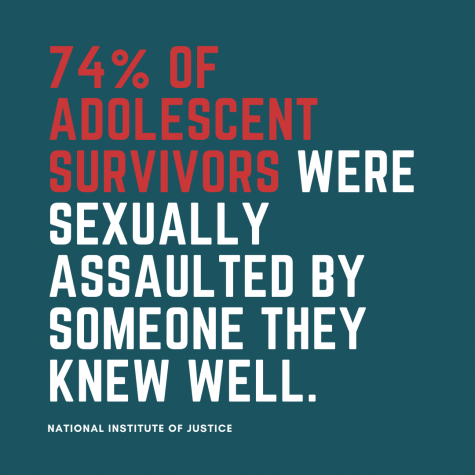
Snell recounts an experience a few years ago when she was walking with a friend and passed a man who was verbally berating his unresponsive partner.
“My skin just crawled and I felt, ‘I have to say something. But what do I say? I don’t know them. I don’t want to make it worse,’” Snell said. “All the barriers that come up as to why we don’t intervene, they were all coming up in my head. But I knew that I can’t sit here and teach all of you if I’m not even willing to do something in a tough situation. So they walked past me and I turned around, I said, ‘Excuse me.’ And he turned around and gave me such a look. And I said, ‘I lost my watch. Can you please tell me what time it is?’ And he goes, ‘Oh, yeah, it’s 12:45.’ And I said, ‘Thank you.’ They walked off in silence.”
While she did not solve their relationship problem or resolve the argument, Snell says that she was able to distract him from his anger, even for just a moment. She emphasizes that “we may not be able to change the whole world with every interaction that we have, but it’s very possible that we can change the world for one person.” Stepping in can decrease the frequency of negative behaviors since people know they will be called out for it.
VERBAL STRATEGIES FOR DE-ESCALATION
Snell emphasizes the importance of verbal strategies, because they are meant to prevent a situation from escalating into a physical altercation, as “the best fight is the one never fought.” The first verbal strategy is to deflect and send the potentially dangerous person somewhere else. She describes a hypothetical situation in which a stranger approaches her in a parking garage and asks for her help in finding their car. Since her intuition tells her something is wrong, she deflects, telling them to ask for help from the security office and yelling for security.
“Your voice is a powerful weapon, and it’s not talked about enough,” Snell said. “Our voice is such a powerful tool for our safety, that it often is a deterrent in itself. So, when we use our voice, we’re really loud. We are not only startling the person because they’re not expecting us to be loud, they’re not expecting that kind of response that can be distracting and intimidating to somebody. The second thing that it does is it can get the attention of other people nearby.”
To explain the second strategy, empathy, Snell describes a situation in which a drunk acquaintance is going through a breakup and tries to hug her for comfort. Snell intercepts and blocks off the hug, saying that she understands that they are having a rough time but is uncomfortable hugging them, and suggests an alternative like a high-five. According to Snell, 86% of people assaulted know their perpetrator personally, meaning that identifying boundaries and being mindful of consent is crucial.
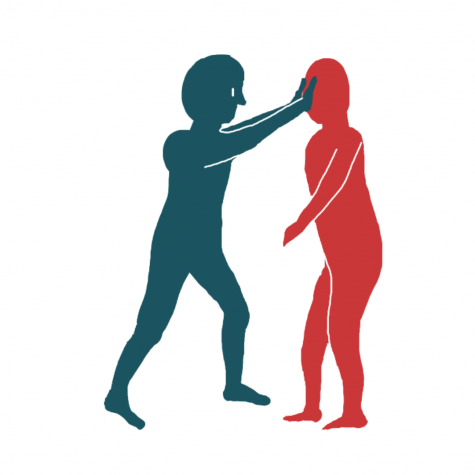
“You can [provide an alternative] or you can not have an alternative, because it’s your boundary,” Snell said. “You get to decide so your body belongs to you. It does not matter your gender identity or sexual orientation identity, it doesn’t matter the relationship of the person … We should be able to express what we need and that’s a very respectful way of doing it: give their hands back to them, look them in the eye and be direct with what you want and what they did, so that they know what they did and that they don’t do that in the future.”
Snell mentioned alcohol in this scenario and says that, according to the Department of Justice, at least 50% of all violent crimes, including sexual assault, occur when the perpetrator, the survivor or both have been consuming alcohol or drugs. This does not mean the substances caused the crime; the substances increased the vulnerability and passivity of the victim, making them more susceptible to a perpetrator. The survivor is not faulted due to their consumption of substances, nor is the perpetrator absolved of responsibility. In these situations, Snell recommends legal drinkers to drink with awareness, sticking with a group and watching out for others.
DOUBLE BOUNDARY FOR PHYSICAL SELF DEFENSE
In the case where intuition, awareness and verbal strategies are ineffective and danger is imminent, Snell says to assume a ready stance: feet a little wide, one foot back and hands in front of the face towards the person, elbows by the side, and to say at full volume, “No. Back off. I don’t want any problems.” This body language, in contrast to fists up in front of the face, is still de-escalatory, since the goal is for the other person to walk away without a fight.
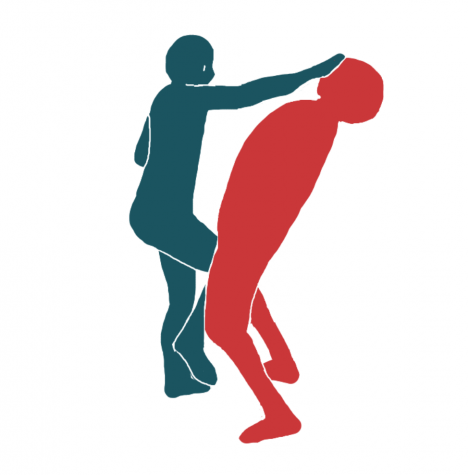
“Imagine being in a creepy weirdo’s position and you get that coming back at you,” Snell said. “Are you thinking, easy target or someone you don’t want to mess with? You want to be someone that they don’t want to mess with because they now know something’s going down if they continue.”
If the person still does not leave, Snell says you should start to think about where the person is vulnerable (face, groin, solar plexus, which is the upper abdomen) and where you are strong (knees, elbows, legs, teeth). The goal is to target vulnerable areas to disable the attacker as fast as possible to run away and get to safety.
After assessing those points, Snell says to begin what she calls the “Terminator Tango.” In the ready stance, one should first do a heel-palm to the attacker’s face or solar plexus, aiming up and out, like shutting an airplane overhead bin. At the same time, one should yell “no” to help breathe and get the attention of others.
Once the attacker is in pain from the first strike, the second strike is a knee to the groin, regardless of sex of the attacker. Snell instructs people to grab the shoulder of the attacker to better power the lower thigh (not the kneecap).
At this point the attacker could be bent over from the pain, and the third strike is to grab the back of their face or shoulder and knee them in the face.
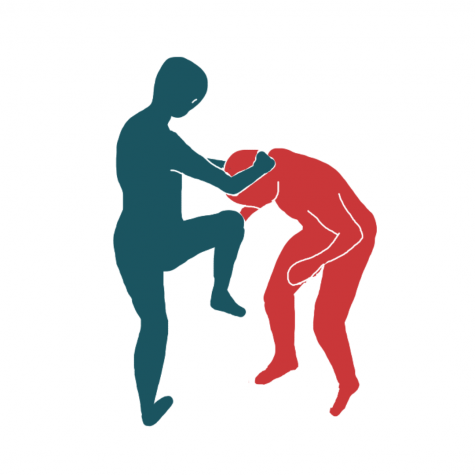
“People who learn self defense are less likely to actually have to use the physical techniques,” Snell said. “More confident people are more willing to speak up for themselves, more willing to speak up for their boundaries. They feel more competent dealing with different situations, they know they have options and so they are less likely to have to use the physical techniques. I have not yet had to use my physical techniques. Except for the [ready stance], and that was enough to get someone to back away.”
RESOURCES ON CAMPUS
Clausnitzer says that students feeling unsafe in any way are able to communicate with a trusted adult on campus — be it counselor, teacher, administrator, school-based therapist or the Student Safety Report Google Form. On campus, students can contact Assistant Principal Janice Chen; at the district level, students can contact FUHSD Title IX coordinator and associate superintendent Trudy Gross.
“Nicole is dynamic, engaging, a wonderful speaker and host, workshop facilitator, defense instructor specializing in sexual assault and violence prevention, education, personal safety and empowerment,” Clausnitzer said. “She believes in social justice, equality and that everyone has the right to walk through the world feeling safe, powerful and confident.”
Clausnitzer says that one of the WASC goals at MVHS “is all about ensuring all students feel safe, valued and welcome here.” Snell affirms that every student and individual should tell themselves they are worth the defense.
“I know that all of you are worth fighting for,” Snell said. “You need to know that too, because that knowledge is the best self defense tool you could ever have. So, we have to know that we are worth fighting for. We are worth setting boundaries for, we are worth standing up for what we need.”








